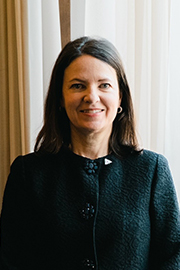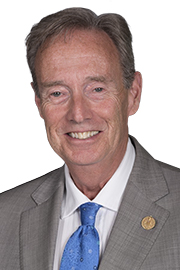- Feb/27/23 11:00:00 a.m.
We have heard this government talk about the importance of primary care providers, and building medical schools to train more family doctors will help in the years ahead. But why aren’t they taking action now? There are 1.8 million Ontarians who do not have a family doctor right now, including many of my constituents in Don Valley West. We hear every day, especially over the holidays, about ERs closing.
The OMA provided recommendations to help solve the family doctor problem right now: for example, investing to build centralized referral lists, reducing admin burden on doctors by hiring medical scribes so they can see more patients, and implementing more family health teams.
My question to the Minister of Health: Why is this government not implementing the recommendations of the OMA and instead prioritizing the introduction of Bill 60. And what metrics will they put in place to show Ontarians that profits don’t come at the expense of taxpayers?
- Hear!
- Rabble!
- Feb/27/23 11:30:00 a.m.
My question is to the Premier. Recently, the city of Toronto has created a subcommittee out of frustration and the need for more insight and input into the massive Ontario Line project. This means that they’re going to have to dedicate city staff and other resource time to make sure that they can actually staff those committee hearings.
They’ve slammed Metrolinx and the provincial government, who are charged with building the subway line, for being too secretive.
When will the government finally give public answers about when they expect the Ontario Line to be completed and how much it will cost?
The Ontario Line has already doubled in cost. It is going to be the most expensive and overpriced transit line in the history of Ontario. Local businesses and taxpayers want to know—they demand an answer: Are they going to get a good deal from this government, especially since the notifications around tree removal and other types of construction headlines are being blocked by someone in the ministry?
My question is: Will this government actually provide the information that the city of Toronto and the residents deserve? Will they give it to them in a timely fashion and when will my community get an apology for the fact that they were blocked from notifications for the removal of the trees in Osgoode Hall as well as Moss Park?
- Hear!
- Rabble!
- Feb/27/23 3:20:00 p.m.
- Re: Bill 60
Yes, Speaker, that’s true. Prior to that, I was a civil servant at Queen’s Park where I worked for the Ministry of Health, I worked for the Ministry of Long-Term Care and I worked for the Ontario Seniors’ Secretariat. Following that, I started my municipal career in 2003, and was 13 years as a regional councillor for the region of Durham. At that council, I was the chair of the health and social services committee for seven and the president of the local public health agency of Ontario for two.
I offer that particular background because it provides some context for what I’m going to say and relate it not only to that experience but also, at the same time, Speaker, to the riding that I’ve had the privilege of representing now with that combined experience for 20 years.
Under our government, we’ve increased health care funding by $14 billion since 2018. To put things into perspective, in 2015, the health care budget was $50 billion. Today the health care budget is $75 billion, a 50% increase in eight years. I call these investments and not simply spending. That’s an important distinction, I believe, because our government believes in fiscal responsibility, respecting taxpayers’ dollars and not simply throwing money like previous governments did, without a plan. We have a plan, and that plan is being implemented.
Let me highlight some of the bricks we’ve put in place to enable this ambitious and innovative work. Over the last four and a half years, we have built 3,500 acute hospital beds, including pediatric critical care beds. We currently have shovels in the ground on 50 new major hospital projects in total, including one in Brampton. It’s a historical infrastructure investment of $40 billion over 10 years. We’ve also provided operational funding for 49 new MRI machines in hospital since 2021 to help us address some of the diagnostic imaging backlog. We’re on track to building 30,000 new long-term-care beds by 2029, including culturally and linguistically appropriate beds for Francophonie, Muslim, Coptic, Punjabi and many other diverse communities living and thriving in the region of Durham and other parts of our province. There has been a long-standing demand in providing these types of beds and we’re responding directly to those demands, not only in my region but in other regions of the province.
We’ve also grown our health care workforce by 60,000 new nurses and 8,000 new physicians since 2018. We currently have 30,000 nursing students enrolled in colleges like Durham College in my riding and other universities outside of my riding in Oshawa: Ontario Tech and Trent Durham. Those programs are oversubscribed. The need is there, and we’re filling that need with this plan.
Speaker, with my remaining time, I’d like to outline the three health care pillars and what they mean to hard-working families in Whitby and other parts of the region of Durham, where there’s close to a million people.
Pillar one is the right care and the right place, and we’ve expanded the role of pharmacists to allow them to prescribe for 13 common ailments such as hay fever, oral thrush, pink eye, acid reflux, cold sores and insect bites, to name a few. This will allow patients convenient access to care, while off-loading some of our primary care clinics. We’re also supporting end-of-life care by adding new hospice beds; for example, Oak Ridges in Port Perry, which is in my deputy whip’s riding in Durham—a long-standing need there. Again, we’re filling a need. We’ve listened carefully, we’ve included it in our plan and we’re responding.
The second pillar, faster access to care, under which the government is investing $18 million into existing surgical and diagnostic centres, will allow thousands of patients access to those much-needed procedures; for example, Lakeridge Health. That’s situated in Oshawa, but it’s also situated in Ajax and Pickering. This investment into 49,000 hours of MRI and CT scans represents cancers caught earlier and lives of region-of-Durham residents prolonged. Once these patients are diagnosed, they often need surgery. That’s why our government is investing $300 million into the Surgical Recovery Strategy.
Finally, the third pillar: hiring more health care workers. I’m so proud of 2022 seeing a record-high number of registrations under the College of Nurses of Ontario. Some 12,000 nurses, a record-high number, have entered the profession—absolutely outstanding. As I mentioned earlier, the programs at Durham College and Trent Durham and Ontario Tech are all oversubscribed, so we’re adding to that as well. We’re the only jurisdiction that is currently doing that in Canada, and 5,000 internationally educated nurses are on track to work in our health care system.
What’s clear is that for too many people, whether it’s the region of Durham or other parts of our great province, health care is too hard to access. I think you would agree with that. The status quo is not working. Whitby residents and those in other parts of the region of Durham deserve to be able to get care where and when they need it. Our plan does exactly that.
This means more hospital and long-term-care beds in the communities. It means more diagnostic testing, like MRIs and CT scans, closer to home. And it means more skilled health care workers—some of whom I just referenced—available to provide care. Clearly, we need to be bold, innovative and creative, and we absolutely are.
Over time, Ontarians will see and feel real improvements in the care they receive as we build a better health care system for the future, for my children and my granddaughters, Annette and Sophia. People have more information and better tools to make the right decisions about their health, and it will become faster and easier for Ontarians to connect to the health services they need in their community or at home, no matter where they live, using their OHIP card—not a credit card. This plan has been well-conceived and it’s been based on wide consultation with different sectors across the province.
I’m happy now to turn over the next 10 minutes to my colleague MPP Trevor Jones.
Interjections.
- Hear!
- Rabble!




